Content
- 1 How to choose and plant seeds
- 2 Watermelon care
- 3 Pollination of the plant and the appearance of fruits
- 4 How to grow watermelons in the country (video)
- 5 About the beneficial properties of watermelon
- 6 We plant watermelon seedlings in open ground (video)
- 7 Gallery: watermelon at home (15 photos)
- 8 Preparatory work
- 9 How to plant a watermelon correctly
- 10 Plant care
- 11 Harvesting
- 12 Variety selection
- 13 How to grow a watermelon outdoors
- 14 Follow-up care
- 15 Harvesting
A long liana, with carved leaves and hanging, huge fruits by household standards - this is how a watermelon may look at home. It is usually grown in summer, when there is plenty of light and warmth. And today, growing a watermelon at home on a windowsill is not at all a fantasy, because with proper care you can get a decent harvest. How to grow a watermelon at home - read the article.
Conditions for growing watermelon
How the watermelon will grow and whether it will give edible fruits depends on the choice of soil, top dressing, watering, temperature and light regime and the choice of place.
A place
It is preferable to grow watermelon on the south side. The more sun the better. Direct sunlight is only good for him.
An ideal place at home would be a warm, sunny loggia or balcony. You can plant plants on the southern, western and eastern windows, the northern ones are absolutely not suitable for them.
In fact, growing a watermelon on a balcony is not so difficult, you just need to comply with the necessary conditions.
back to contents ↑ Light
Daylight hours for successful cultivation of watermelon is 12-14 hours. In the evenings, they turn on LED, fluorescent lighting or phytolamps. On cloudy days, the lamps are left on for the whole day.
Temperature
Watermelons are grown at high temperatures of 25-30 ° C during the day and at least 18 ° C at night. It is especially necessary to monitor the thermometer during the formation of the ovary.
Watering
Plant breeders differ greatly in terms of watering. Some prefer regular, and even plentiful watering, others talk about its strong limitation and its complete cessation during ripening, arguing that water is not needed to increase the sugar content. In any case, the seedlings are watered in the usual way, and the watering of the plant in the second stage of its life depends on a number of conditions, including experience.
to the content ↑ Soil and fertilizers for plants
The soil is prepared loose and fertile with a neutral reaction: 1 part of sod land, sand, humus, plus one tenth of ground wood ash. For disinfection, the soil is steamed in a water bath for 1.5-2 hours, kept in a microwave oven for 10-20 minutes, spilled with boiling water.
Top dressing begins when the plant has 3 true leaves. Plants are watered with water, and then with complex mineral fertilizers (Kemira, etc.), diluted according to the instructions. The ratio of nitrogen, phosphorus and potassium in them at this stage may well be shifted towards nitrogen, but it is better that they are equal. At the stage of ovary formation, they are fed again - there should be more phosphorus and potassium fertilizers. After 2-3 weeks - the third time.
back to content ↑ Planting watermelon seeds
Not all outdoor watermelons are suitable for home cultivation. There are varieties that bear fruit indoors, such as Ogonyok, Crimson Sweet, Ultra-early, Sugar baby, Sibiryak, Gift of the Sun, Kai F1, Cinderella, Gift to the North F1. They have good taste, do not need abundant light, early ripening, disease resistant.
The seeds of these varieties are distinguished by good germination and if they are purchased from trusted suppliers and the brand is reliable, then almost everything germinates. Before planting, they are kept for 10-15 minutes in a weak solution of potassium permanganate at a temperature of 50-55 ° C. Then they are placed in a damp cloth (sand, etc.) until they bite, after which they are planted in 2 cups for seedlings, burying 2 cm in the ground. You can plant them directly in cups.
An interesting, but optional, technique of stratification when germinating seeds in a humid environment, stimulates the processes in the seed: they are kept for 12 hours on the lower shelf of the refrigerator at a temperature of + 6 ° C, then another 12 hours at room temperature. The process is repeated 2-3 times.
back to content ↑ Growing watermelon seedlings
2 weeks after the emergence of shoots, weak seedlings are discarded and left in each glass, one of the strongest.
It is undesirable to plant watermelon seeds right away in large containers: a large mass of undeveloped soil easily sour, and the seedlings may die. They are transplanted after a month, the plants are moved to a permanent place along with a lump of earth, in order not to injure the roots.
Seedlings can be planted in open ground and get a good harvest in the garden. Pre-hardening: during the week, take out the seedlings for a short time every day in the open air.
back to content ↑ The process of growing watermelon
After transferring the seedlings into pots, the root begins to grow rapidly. It grows long, with well-developed lateral roots, so large containers are selected - 5-15 liters.
The pinching is carried out over 3-4 leaves, the lateral branches are directed vertically or allowed horizontally. It is also grown in one lash, in this case flowers and fruits will appear faster.
Flowering (after 30-50 days) and fruiting of watermelon depends on the variety, which are early ripening, mid-ripening and late-ripening. It is interesting that, depending on the timing of flowering, flowers appear in different leaf axils: in early maturing - in 4-11 leaf axils, with an average period - at 15-18, late - at 20-25. Any variety can be grown in the house, but given the thermophilicity and photophilousness, they give preference to early varieties.
To obtain fruit, the flowers are artificially pollinated. Watermelon has 2 types of flowers - male and female, which appear on both the main and lateral shoots. Male flowers (developed stamens, thin peduncle) pollinate female flowers (developed pistil, thick peduncle) and await fruit set. An enlarged stalk of a female flower means that the little watermelon has begun to grow. With the vertical arrangement of the lashes, it becomes necessary to attach it to prevent breakage.
Do not leave more than 2 watermelons on the branches in the house if you want to enjoy the delicious pulp. The shoots are pinched after the formation of the fruit so that the forces go to its ripening, and not to growth.
From planting to the end of the growing season, an average of 3 months pass. It is difficult to grow a fruit over 1 kg at home. Wait until the watermelon ripens and it may taste better than the purchased ones. Recall that in a mature fruit, the bark is glossy, the stalk is dry, without hairs. when knocking, a ringing sound is heard.
But, even observing all the rules of care, there is no guarantee that you can get a large-sized watermelon on a windowsill or balcony. And yet, growing such an exotic plant will bring a lot of pleasure and new skills in growing unique plants at home.
Similar articles:
 Thanks to modern technologies, growing berries and vegetables is no longer a fantasy. To understand how to grow a watermelon at home, you need to familiarize yourself in advance with some of the nuances that will allow you to collect an ecological and tasty harvest over time.
Thanks to modern technologies, growing berries and vegetables is no longer a fantasy. To understand how to grow a watermelon at home, you need to familiarize yourself in advance with some of the nuances that will allow you to collect an ecological and tasty harvest over time.
How to choose and plant seeds
First of all, you need to choose a material for planting.Not every variety of watermelon can be grown at home.The seeds of the delicious watermelon from the market or store are not suitable for this purpose, because this variety is grown in open areas in spring and summer. For the same reasons, varieties that are grown in summer cottages will not yet be suitable.
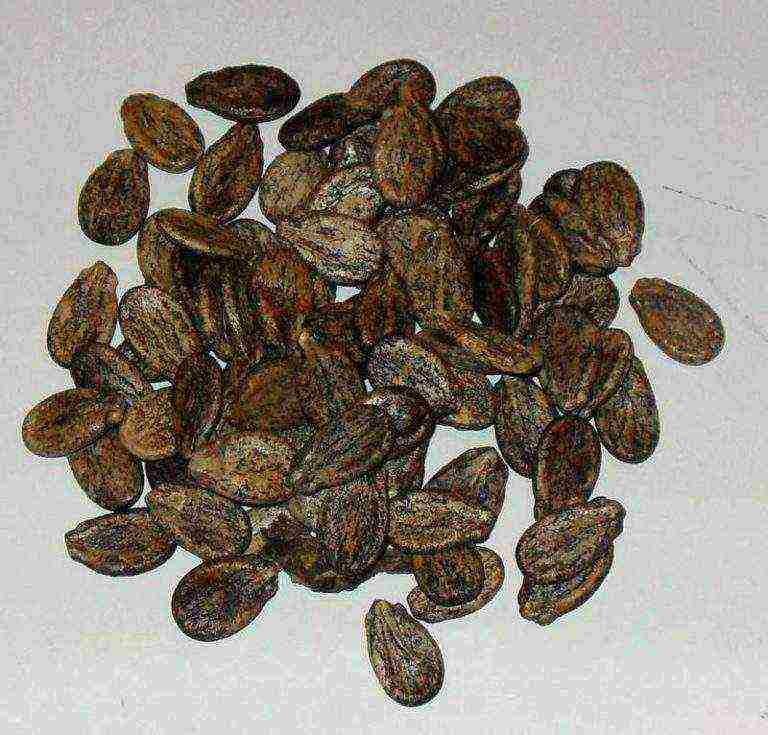
But there are hybrids that are resistant to lack of light, early maturing, they do not require special care. The following varieties are considered excellent: Ogonyok, Kaho, Sibiryak, Volgar, Gift of the Sun. They sprout very well, are tenacious, the fruits have a sweet taste.
After the acquisition, the planting material must be selected before growing the watermelon at home. Small and damaged seeds are eliminated immediately. Large seeds are dipped into a glass container containing a solution of sodium chloride. It is done like this: 5 g of salt per 0.1 l of water. Seeds that have sunk to the bottom must be removed, rinsed in water, and dried. It is these seeds that are needed for planting.

Then they are soaked in a solution of humate (0.5 g per 1 liter of water). This is done as follows: gauze is moistened, in which the seeds are left for a day. This will increase germination and reduce stress. You can also leave the seeds in a gauze moistened with plain water until they begin to hatch.
Then the seeds need to be planted in small plastic cups of 4-5 seeds each, the earth should be a little tamped in them.
Watering should be done in such a way that the soil is always moist. For seedlings to appear, the temperature must be about 25 ° C. Then the seedlings will appear after 1 week. If the temperature is below 13 ° C, then seedlings can not be expected.

Cups should be in a well-lit and warm place. No need to allow drafts. After 2-3 weeks, 1 seedling should be left in each glass.
Watermelon care
As soon as 3 leaves appear, the plants are moved into containers, the volume of which is from 5 to 15 liters. They should contain a mixture of seedling soil and perlite in a 2: 1 ratio. It is necessary to water the plant often, but not abundantly, so that the water does not stagnate. The soil must be fertilized every 2 weeks. Liquid vegetable fertilizers work well here. You need to add 1 tsp in 1 liter of water. fertilizers. This solution can only be used for 1 watering.

When 6 leaves grow, the plant is pinched over 4 leaves. The plant needs enough light. If there is not enough lighting, then additional LED or energy-saving lamps will be required.
Pollination of the plant and the appearance of fruits
In most cases, watermelons begin to bloom 30-50 days after germination.
To obtain an ovary, flowers require pollination.
To do this, you must first find male flowers that have a thin stalk. Such flowers will need to be carefully picked, they need to pollinate the female flowers by touching the stamens to the pistils.
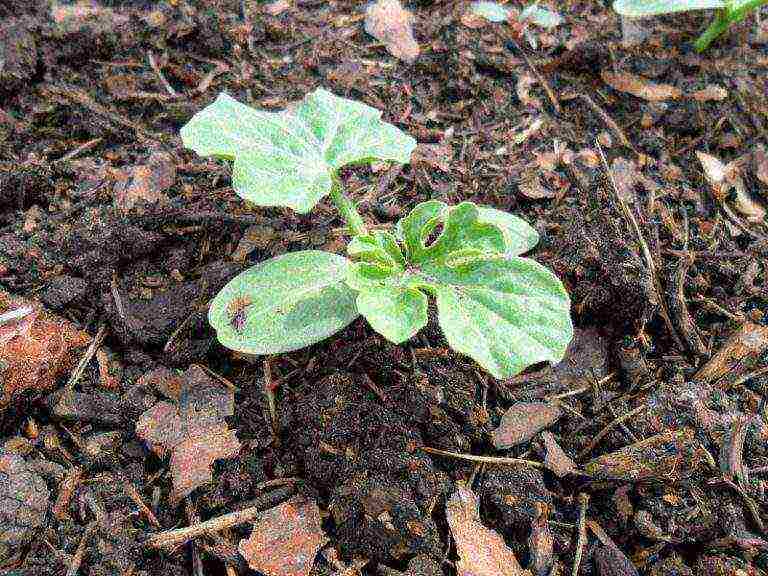
After a certain period of time, there will be noticeable wilting of the petals and an increase in the stalk, which over time will become a fruit. As the lashes grow, they will need to be pinched to stop their growth.
A few weeks before the fruit is fully ripe, watering should be minimized, stimulating the appearance of sugar in the berry. When the grown fruits are ripe, you can harvest.
How to grow watermelons in the country (video)
About the beneficial properties of watermelon
This berry contains a lot of sugar (about 12%). It is easily absorbed by the body and, unlike refined sugar, is beneficial.
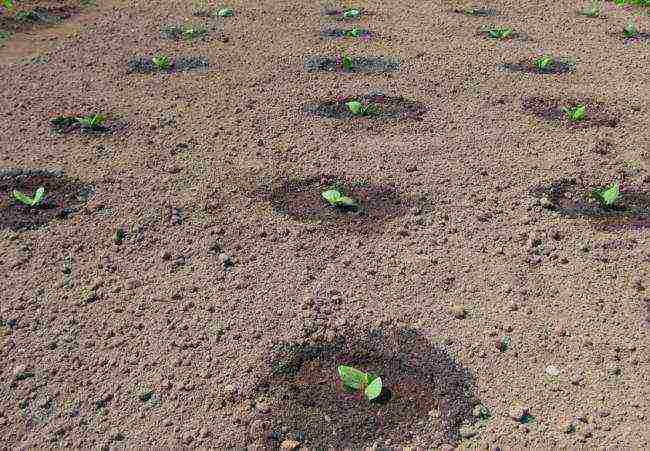
Watermelon juice has a diuretic effect, so it is able to flush the kidneys and ureters well. Thanks to him, salts are dissolved and washed out of the body. Watermelon juice is considered beneficial for people with kidney disease. Watermelon juice is also useful for people who have diabetes mellitus, cystitis, atherosclerosis.
Now you know about growing watermelon at home. We wish you a good harvest!
We plant watermelon seedlings in open ground (video)
Gallery: watermelon at home (15 photos)

Many people love watermelons.But watermelons appear on the market only in a certain season.
What to do if you wanted to feast on juicy pulp at other times of the year? There is a way out - to grow a watermelon from seeds at home.
True, not everyone has a personal plot where you can put a greenhouse and grow watermelons. But everyone has a window sill or balcony, and this is enough to grow this plant at home.
Preparatory work
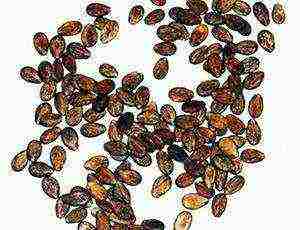
When growing watermelons at home, you can safely skip the seedling stage, which is needed if you plan to transplant the plant to the open air. At home, planting occurs immediately in a large container, in which the watermelon will grow until fully ripe.
The first thing to do to plant a watermelon is to purchase or build your own planting box. If you haven't found a drawer, a basin, bucket, or flower pot is also great.
The main thing is that the volume is large enough for the root system. It is not advisable to use a transparent container - the roots of a watermelon are sensitive and can dry out.
As a soil, it is better to take store-bought soil rich in microelements. It is imperative to enrich the soil with lime fertilizers, since the acidity of 6pH is required for growing watermelons.
Important to remember: the volume of the growing container must be at least 10-15 liters!
Seeds, as in many other crops, must be soaked before planting. It is necessary to keep in water until the seeds hatch.
How to plant a watermelon correctly
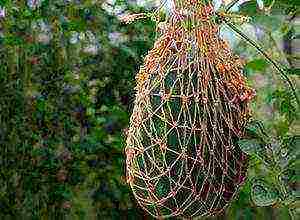
The net will help the heavy fruit stay on the vine.
3-4 seeds are usually planted in one container, planting is done to a depth of about 3 centimeters. But this does not mean that they will all grow in one container. Of those seeds that will sprout, you need to leave only one, the healthiest-looking sprout.
Watermelon is a plant that needs a lot of light. Therefore, an excellent solution would be to place seedlings on the windowsill.
If you plant seedlings in the winter season, then you need to take care of additional lighting, since in natural conditions the plant receives light for 12 hours.
Remember that the plant is thermophilic and it is very easy to freeze it. Therefore, if you have chosen a window sill on the balcony, then you need to make sure that the temperature is right there. The ideal temperature for the growth of this culture is + 25-30 degrees during the day and about 17-18 degrees Celsius at night.
Despite the fact that the fruit of a watermelon is very juicy, excess moisture is very harmful to this plant. As well as over-watering.
Plant care
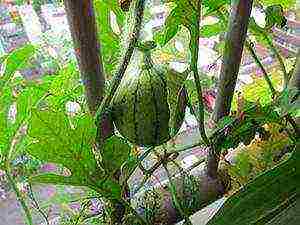
Fruits attached to a support receive more light
During the growth of the plant, fertilizers must be added to the soil. The diet of feeding must necessarily include nitrogen and phosphorus, and after the formation of fruits, also potassium.
It is necessary to place a support in a container with seedlings, along which the whip will grow. When the lash reaches a length of about a meter, it must be pinched. During the growth of the watermelon, the soil must be constantly loosened.
You can not leave more than two fruits on one lash. All excess fruits must be torn off. Left fruits, it is better to fix them on a support with a net.
It's important to know: after the introduction of potassium into the feeding, the amount of nitrogen must be significantly reduced.
Harvesting
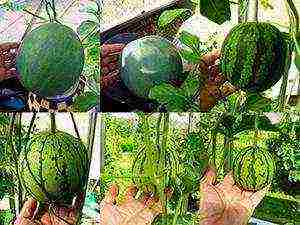
At home, fruits rarely exceed one kilogram. But their peel is much thinner.
It takes about 3-3.5 months to fully ripen the fetus. However, there are also more early ripening and early varieties, in which the ripening period is 60-80 days.
The ripeness of the fruit can be easily determined: if the peel is shiny, the stalk is dry, and the sound is dull when struck, then the fruit is ripe.
If you didn't manage to grow a watermelon at home the first time, don't be discouraged. You just need to make another attempt, while taking into account the recommended varieties for growing in your area and the reviews of amateur gardeners.
Below, we suggest you watch a video about how watermelons grow on a windowsill:
Rate the article
(
estimates, average:
out of 5)
It has become common for gardeners to grow watermelon. The process is simple, but it has certain difficulties that must be taken into account when growing (the plant may die even before flowering, the fruits do not always grow tasty, and so on). More details on how to grow a watermelon with your own hands will be discussed in this article.
How to grow a watermelon
Variety selection
The choice of a variety should be approached with special responsibility. For the middle zone of the Russian Federation, it is advisable to choose only early-ripening varieties, and there is no need to chase after huge fruits in this matter - such watermelons realize their potential by 100% only when grown in the south of the country. Be sure to read the description of the variety on the package - it contains information about the duration of ripening (the ovaries of plants should ripen as quickly as possible).
Choosing a watermelon variety
On a note! Some qualities can be neglected when choosing a variety. First of all, it is large-fruited and transportable. Also, do not pay attention to the color and shape of the fruit - this is necessary only in those cases when you grow watermelons not for yourself, but for sale.
The most common varieties of watermelon:
- "Kai";
- "Sugar baby";
- "Ataman F1";
- "Ultra early";
- Stokes;
- "Ogonyok";
- Charleston F1 near Moscow;
- "Yarilo";
- Krimstar F1;
- "Leader";
- "Pink Champagne F1";
- "Gift to the F1 North".
This is just a small part of the varieties that can be grown not only in the south of the country, but most often people choose them. Having decided on the type of watermelon, you can start growing.
There are many different varieties of watermelon
How to grow a watermelon outdoors
Not everyone knows, but watermelons can be grown without seedlings, but with seeds, already in a permanent place. Often, seedlings are used only for further transplantation into greenhouses, so that the watermelon ripens. But if you are growing a watermelon in a garden plot, then you can safely skip the stage with seedlings and sow seeds.
Growing seedlings of watermelons
The planting process is divided into several preparatory stages to obtain a good harvest. Let's consider each of them separately.
Seed preparation
Having chosen a suitable variety, wrap the seeds in a cloth bandage and place them on a shallow plate, filling them with a pre-prepared solution of potassium permanganate. The solution should be light pink and warm. After that, put the saucer with the seeds in a plastic bag and tie it up, taking in a little air. Transfer the seed plate to a warm room (at least + 20 ° C). Change the solution daily and ventilate the bag. After 2-3 days, the seeds should hatch, after which they will be ready for planting in the ground.
Watermelon seeds
Soil preparation
It is very important to prepare a plot of land before planting a watermelon. This is an integral part of growing, without which you are unlikely to get a good harvest. The prepared soil should provide plants with nutrients throughout the entire growth period, it should be protected from strong winds, and also well lit.
Preparing the soil for planting
Clearing and leveling
For a watermelon, as well as for other melons and gourds, you need a loose, fertile and light soil. It's great if your suburban area has sandy loam or sandy soil, which you enriched with rotted humus in the autumn. If we talk about suitable predecessors of watermelons, then these are certainly tomatoes, potatoes, cruciferous vegetables, as well as legumes.
For the best result, it is advisable to prepare the beds in advance and fertilize the soil. To do this, 1 sq. m of the site, you need to add 20 g of potash fertilizers, 40 g of superphosphate and 30 g of ammonium sulfate.This combination of mineral fertilizers will significantly accelerate the growth of the watermelon, as a result of which you can enjoy juicy and sweet fruits a little earlier.
Fertilization
Sowing watermelon seeds
The process of planting watermelon seeds is simple and practically does not differ from planting any other crop.
Table. Step by step instructions for sowing watermelon seeds.
|
Step one |
Start sowing watermelon seeds in early May as it is a very thermophilic plant. Otherwise, if you do this earlier, the plant will greatly slow down in development. Take out the previously prepared seed material that has already germinated. |
|
Step two |
Also, you should have a planting mixture at the ready, consisting of rotted humus, ash, mineral fertilizers and peat (the composition may vary, since there are many different recipes for preparing the mixture). |
|
Step three |
Dig a large watermelon hole and fill it with a little water. |
|
Step four |
Pour the prepared fertilizer and humus mixture into the hole. Level gently with a hoe and water. |
|
Step five |
Place at least 5 seeds in the hole (5 cm deep) and sprinkle it all over with earth. The soil layer should be approximately 4 cm thick. Gently tamp the soil so that the seeds are not blown away or injured. Repeat the procedure for each well. |
Hole for watermelons in the open field
Important! First, you need to sow 5-6 seeds in each hole, but over time, when they begin to develop, leave one plant in the hole.
Follow-up care
Without providing full care, including feeding and watering, it is impossible to grow a watermelon in the garden. The juiciness of the fruits directly depends on the level of humidity, but you should not overdo it with this matter, because you cannot then feast on the sugar pulp of sweet berries, which everyone loves so much. Conditionally, follow-up care can be divided into 4 stages: watering, feeding, trimming lashes and destroying pests. Let's consider each of them separately.
Watering
When growing watermelons in a summer cottage, it is advisable to use drip irrigation systems. This will allow for regular feeding of crops.
The best option is drip irrigation.
For the most correct and accurate application of fertilizers, an agrochemical analysis of the soil is simply necessary.
Watermelons need abundant, but rare watering, especially during a hot period with a lack of natural moisture - remember this! For the comfortable growth of watermelons, the soil moisture level should be at least 80%. If the site is located on sandy soil, then the beds need to be watered more often due to poor moisture retention. Water clay soils and chernozem less often. After the berries begin to ripen and they become poured, reduce the number of watering, and after a few weeks, stop them altogether.
Top dressing
Top dressing of watermelons grown in a summer cottage consists of three procedures, each of which must be performed subject to certain conditions: at least 2 liters of liquid fertilizers must be per plant. After 7 days from the moment of planting the seeds, it is necessary to regularly water the plants with a special solution prepared with your own hands (all the ingredients and their proportions were described above).
Watermelons need to be fertilized in a timely manner
After the lashes on the plants begin to grow actively, you need to make a second feeding of the watermelons, but this time the amount of potash and phosphorus fertilizers should be half as much. When the formation of the ovaries begins, you need to carry out another top dressing, only with a different composition. Mix 10 liters of water, 35 g of potassium salts, 10 g of superphosphate and 20 g of ammonium sulfate.
Apply the prepared nutrient mixture to the prepared furrows, which should be 15 cm away from the plant bushes. The amount of nitrogen fertilizers should be reduced due to the likelihood of their accumulation in the pulp of watermelons.In addition, such measures can provoke the maturation of the plant, and not a set of green mass.
Fertilizer for watermelons, melons and pumpkins
Trimming the lashes
During a short and not warm enough summer, some fruits of the watermelon do not have time to ripen, although the bush still spends energy on them, which could be distributed to other berries that really ripen. Therefore, each plant should have no more than 5 watermelons. Delete all unnecessary items.
Watermelon formation scheme
Important! When growing watermelons, you need to remember that female flowers are formed on the main lash of the plant - you cannot touch them, but remove the side lashes. Compliance with all recommendations will allow you to get a harvest in the second half of August.
Pollination of watermelon flowers
Pest control
The melon aphid that appears in June can create many problems for watermelons. Living on the underside of the leaves, it sucks out all the life's juices from the plant, as a result of which the leaves wrinkle and dry. During the summer, aphids can give 2-3 generations. At first, the pests live only on weeds, but with the onset of June, females move to watermelons, remaining there until the beginning of autumn. The melon aphid lays its eggs on the weeds, which hibernate there.
Melon or cotton aphid (Aphis gossypii)
To protect watermelons from aphids, it is advisable to regularly weed the beds from various weeds, as well as mow the areas located next to the grown watermelons. If you notice pests, immediately treat the plants with a special decoction or infusion made from celandine, garlic or onion husks. If these remedies do not help and the deciduous system of plants is severely damaged, then strong chemical preparations can be used - for example, "INTA-VIR", "Karbofos", "Iskra".
"Karbofos"
In addition to aphids, watermelons can be subject to various diseases, such as sclerotinia, bacteriosis, copperhead, various types of rot, and so on. For treatment, you need to prepare a decoction of horsetail. To do this, pour 1 liter of water with 1 tbsp. l. plants and cook over low heat for 15 minutes. Alternatively, you can use another remedy - milk mixed with iodine. If the plants have been heavily infested, use Cuprosat or Oxychloride. The development of fusarium wilting can lead to the fact that the plant will die in a few days. The spread of infection occurs through plant debris, seeds or soil.
We fight diseases in watermelons
As a prophylaxis of watermelon from the onset of diseases, it is advisable to treat the seeds with a solution of "Baktofit" for 3 hours before planting. If some plants were nevertheless damaged by an ailment, then they need to be destroyed in order to protect healthy ones from infection, which, in turn, need to be fed with potassium-phosphorus fertilizers.
"Baktofit"
Harvesting
Fruit picking is the final stage in the process of growing watermelons. It is not recommended to rush with this matter, because many fruits that have reached large sizes are still unripe. Ripe tomatoes can be identified by a change in the color of the fruit; when growing zucchini and cucumbers, it is important not to be late in picking, otherwise vegetables may lose their useful properties. But when should you harvest watermelons? When planting early ripening varieties, you can get a crop not earlier than mid-August. Mass harvesting during this period is not carried out, it is necessary to determine the ripeness of the berry by external signs. First of all, look at the bracts and antennae - if they are dry, then the watermelon can be harvested. Also, with a light tapping of your fingers on the berry, deaf sounds should be heard. The combination of these signs indicates the ripeness of the fruit.
Checking the ripeness of the watermelon
If you grow watermelons for further transportation and storage, it is better to pick the berries a couple of days before ripening. They will then mature in a warm and dry room. At the same time, watermelons will not lose their qualities.
Self-grown watermelons do not become boring!
Video - Growing watermelon seedlings


